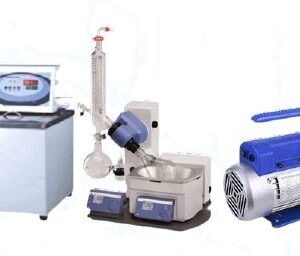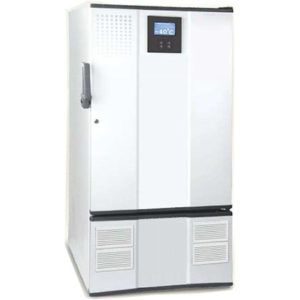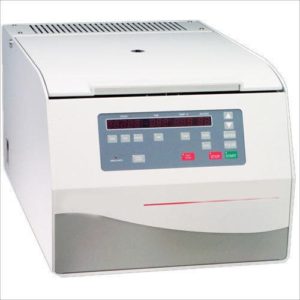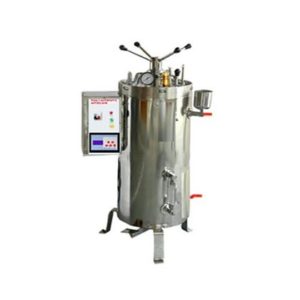KJELDAHL DIGESTION CUM DISTILLATION ASSEMBLY UNIT WITH FUME HOOD
MAKE DINESH SCIENTIFIC
DESCRIPTION:
An instrument used in culinary, agricultural, and environmental testing that measures the nitrogen concentration of organic molecules is the Kjeldahl digesting cum distillation assembly unit with fume hood. The following explains its parts and operation:
DIGESTION APPARATUS:
This usually comprises of digestion tubes or round-bottom flasks with reflux condensers or digestion bulbs attached. These flasks are filled with the sample and an appropriate digestion reagent (such concentrated sulfuric acid). Digestion is the process by which organic substances are broken down and nitrogen is changed into ammonium sulfate.
DISTILLATION ASSEMBLY:
The ammonium sulfate solution is distilled to extract ammonia following digestion. Usually, the distillation assembly consists of three flasks: one for collecting the digested sample, one for distillation (which contains excess alkali, like sodium hydroxide), and one for condensing and cooling the distillate.
FUME HOOD:
A fume hood is necessary for safety while using the Kjeldahl procedure because it uses powerful acids and produces potentially hazardous gasses (like sulfur dioxide). Ventilation is provided by the fume hood to eliminate dangerous vapors and shield the operator from exposure.
CONDENSER:
The ammonia that has evaporated during the distillation process is cooled by the condenser, which causes it to condense back into liquid form. The nitrogen content of the original sample can then be ascertained by titrating the collected liquid ammonia.
Vacuum System (optional): Some setups may include a vacuum system to aid in the distillation process, especially if the samples have high boiling points or if a more efficient separation is desired.
TECHNICAL DETAILS:
MODEL |
DS-FH-1000 |
| Auto sequencing | Programmable |
| Distillation with inbuilt software | Integrated distillation software |
| Microprocessor based | Compatible with PC |
| Display | 7-inch TFT LCD color touch screen with high resolution |
| Expansion Vessel and Condenser | Built-in water condenser and separate expansion vessel |
| Steam Generator | Non-corrosive stainless steel steam generator equipped with safety sensors |
| Auto run of program | Includes adding boric acid, diluting it, adding alkali, adding KMnO4 to provide accessible nitrogen, processing steam, removing residue, and setting an alarm for process overflow with built-in delay time characteristics. |
| Auto Aspiration | Aspiration of receiver residue |
| Automatic Titration Connectivity | Feature for future upgradation |
| Suction Module | Wall-mounted waste residue door for convenient maintenance |
| Automatic Monitoring and Measuring | Elevated temperature in distillate with alert and caution indicator |
| Auto Sensing | Condenser and steam generator are in “NO WATER” condition, alerting the user with an alarm and signal. |
| Auto Tube Inserts Error | Notification for tube inserts error |
| Auto Door Open Warning | Notification for door open |
| System Deactivation on Error | System shutdown that happens automatically when an error is found. |
| Steam Power | Steam power functionality |
| Auto Reagent Level Sensor | Level sensor with alarm for reagent tank |
| Water Saving Mechanism | Automatic online water conservation |
| Access Doors | The electronics control tower and the main unit have their own access doors. |
| Control Tower | Isolated in a different control tower that isn’t internal rack mounted to shield electronics from procedures involving wet chemistry and acid/alkali |
| Protection | Electronics housing for durability and security |
| Control Panel Unit | Features a motherboard, timer, temperature controller, and SMPS built right in. |
| Splash Head | Incorporated for the distillation process |
| Transparent View Window | Allows observation of the distillation process |
| Operation Count | Number of operations for each pump |
| Data Recording and Storage | Ability to log and archive statistical information about the overall amount of time that each pump runs |
| Individual Pumps Tracked | Alkali pump, boric acid pump, KMnO4 pump, and refilling pump |
| Condenser | Non-corrosive robust metallic condenser |
| Level of Detection | 0.1 to 200 mg of Nitrogen or better detection limit |
| Reproducibility | ± 0.1% |
| Nitrogen Recovery | ≥ 99.5% |
| Tube Capacity | 250 and 400 mL |
| Electrical Requirement | 220-230V single phase 50Hz A.C |
| Automatic Running Count | Keeps track of the total number of separate valves that are operating. |
| Valves Tracked | The valves for dilution, venting, condensing, replenishing, steam, and residue |
| Real-Time Display | Valve counts are shown digitally on the touch screen panel. |
| Reagent Tanks | 2 liters for each solution, wall mounted for easy handling and visibility |
| Water Vessel/Tanks | Essential for both steam and addition; part of the system |
| Extra Tubing | Arranged to allow steam, chemicals, and reagents to enter and exit |

















Reviews
There are no reviews yet.